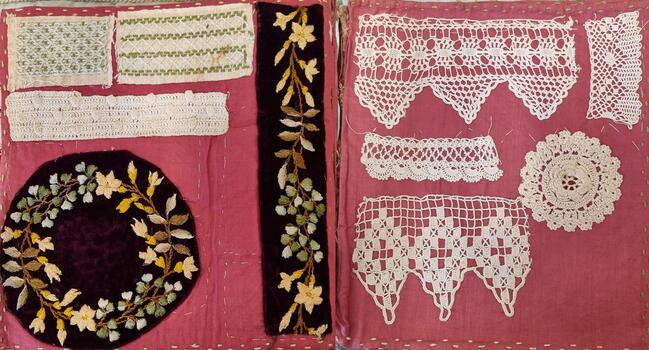Historical information
This sampler booklet was made by Rose Plummer. She was born in Albury in 1886.
During late 19th and early 20th centuries, women and girls made handicraft samplers as essential educational tools to learn and display needlework skills and record patterns. These embroidered pieces served as both a "textile Curriculum Vitae" for working-class girls and a public declaration of accomplishment and diligence for girls of all backgrounds.
Simple samplers were a standard part of a girl's education and often simply recorded the alphabet, numbers, and more advanced stitches through a process of repetition and imitation. The samplers were also a way to record and share decorative patterns and stitches. They demonstrated a young girl's proficiency in needlework and sewing, essential skills for household linen and mending.
For working-class girls, samplers acted as a practical "textile Curriculum Vitae," showcasing their sewing abilities to potential employers for domestic service or related employment.
This book was donated to the Wodonga & District Historical Society by Nancy Beasley, daughter of Rose Plummer.
Physical description
A book filled with samples of embroidery and crochet work.




















